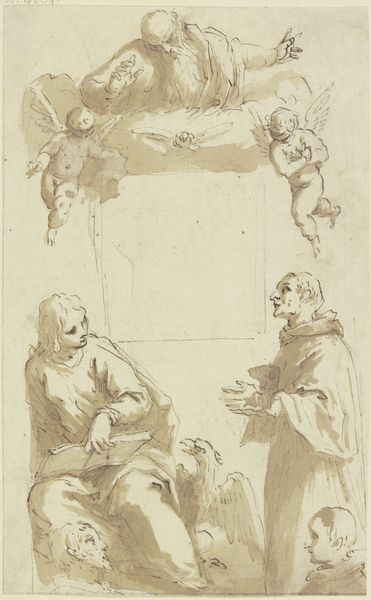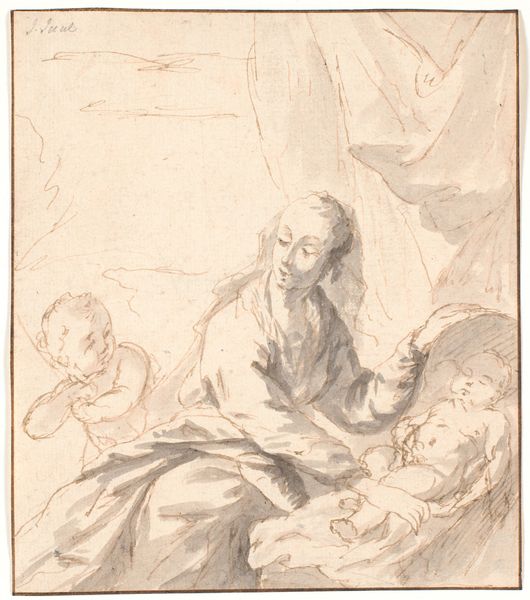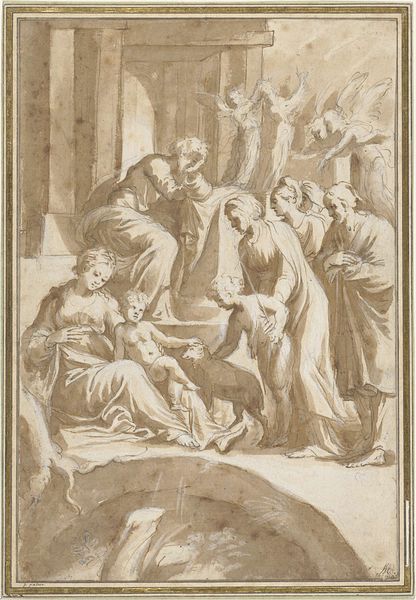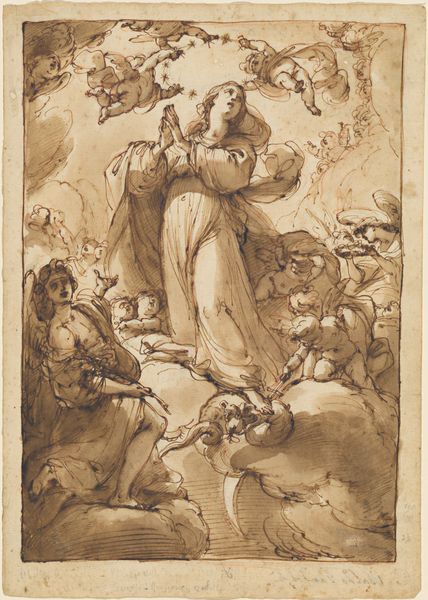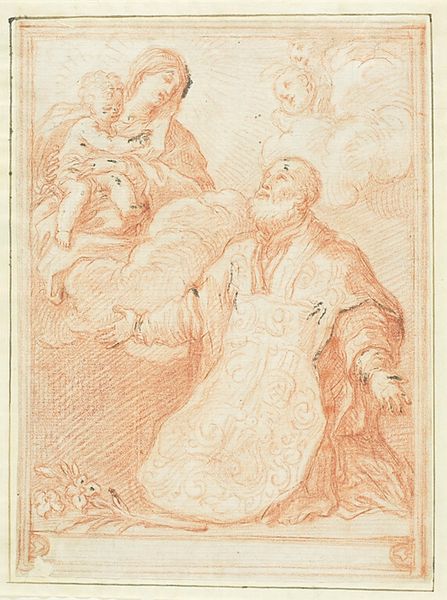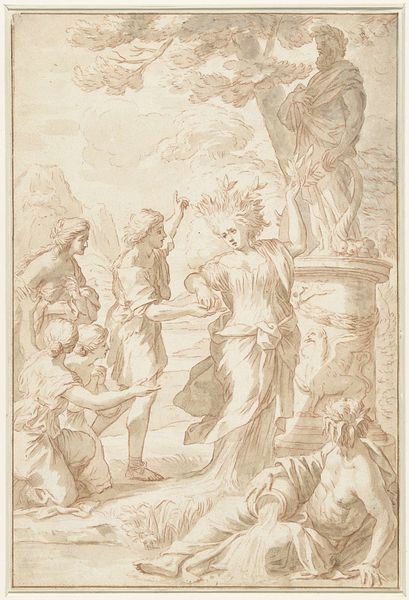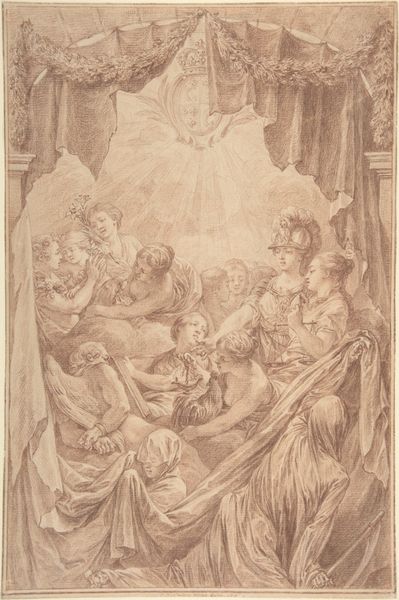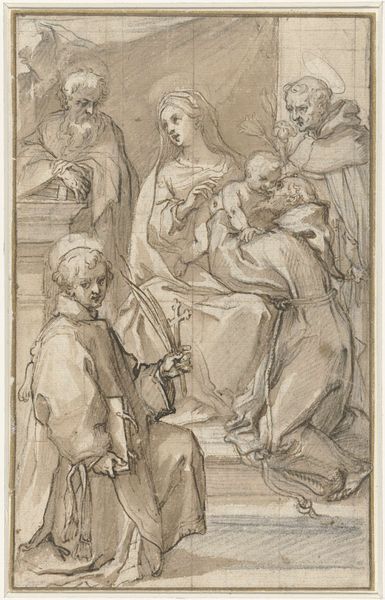
drawing, print, fresco, pencil
#
drawing
# print
#
pencil sketch
#
figuration
#
fresco
#
madonna
#
child
#
pencil drawing
#
pencil
#
history-painting
#
italian-renaissance
Dimensions: 13-1/16 x 9-1/16 in. (33.2 x 23 cm)
Copyright: Public Domain
Curator: The red chalk practically leaps off the page, doesn't it? Editor: It does have a vibrant quality. I’m immediately drawn to the implied motion, even though it's a static image. A devotional study? Curator: Indeed. What we're looking at here is an anonymous Italian Renaissance drawing from around 1500-1640, housed right here at the Met, titled *Madonna and Child and Worshippers*. Editor: The clustered figures down below give me a sense of how people's social class was stratified. Who is kneeling here and how might we know? And the implied relationship to Madonna and the children on the clouds also intrigues me. Curator: Observe the layers of symbolism—the positioning of the Madonna above, seemingly floating on clouds, embodies spiritual ascent and divine grace. The worshippers below are rendered in states of supplication. The varying degrees of detail used, with the Madonna rendered with finer lines, emphasizes her divine status. It adheres to a clear visual language. Editor: But consider the physical act of creating this. Red chalk offers a certain warmth. Was this sketch produced as part of a larger fresco production? I'm looking at the expressive sketch lines and how they capture the transient moments of the artist's thought process. It suggests a work in progress, documenting an idea. The means of production—the material limitations, the quick strokes, were essential to the development of the fresco in my opinion. Curator: It certainly allows a glimpse into artistic practices of the time. And the act of kneeling holds a significant meaning. Notice how the artist positions some figures with upturned gazes and hands clasped in prayer, which captures not only a moment of religious fervor but also mirrors the prescribed physical and spiritual postures of devotion during this era. The historical symbolism adds to the emotional depth. Editor: I find myself connecting less to its religious symbolism and more to the sheer physicality of creation—the extraction of pigment, the texture of the chalk against the page. This piece allows us to reflect on the material history embedded within it. Curator: Ultimately, I see in it a representation of hope. What do you take away as you depart? Editor: A reminder of the unseen labor that constructs even the most revered images. The blending of art, work, and devotion, perhaps.
Comments
No comments
Be the first to comment and join the conversation on the ultimate creative platform.


